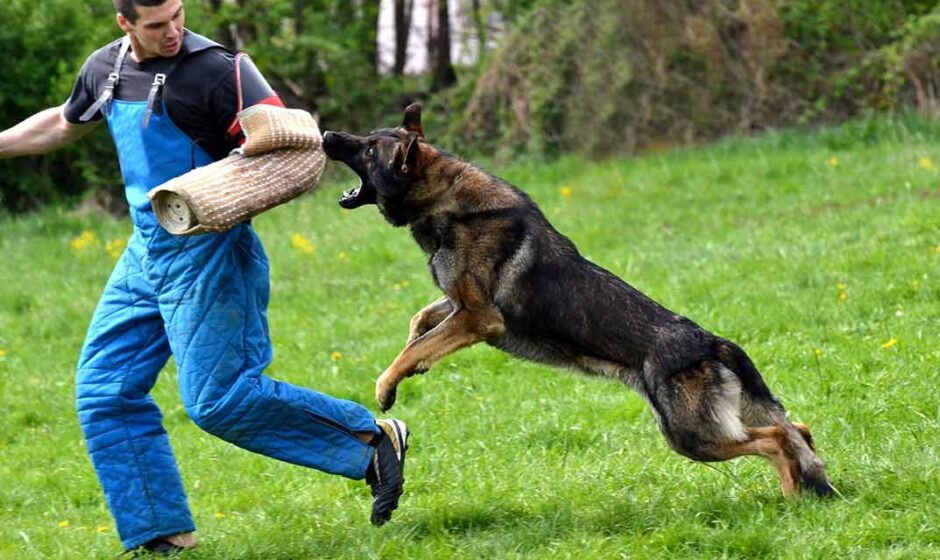When it comes to employee safety, dog bites may not be the first concern on a company’s radar but they should be. Many jobs require employees to interact with dogs regularly, from delivery drivers to utility workers. Ensuring safety in these scenarios isn’t just about protecting employees; it’s about fostering a work environment where everyone feels secure. So, what can companies and employees do to reduce dog bite risks effectively?
Understanding the Risks of Dog Bites
Dog bites may seem rare, but they are more common than you might think, especially for workers who come into contact with pets regularly. From mail carriers to repair technicians. Employee dog bite prevention faces varying risks based on their job responsibilities and the dogs they encounter.
Why Dog Bite Prevention Matters for Employees?
Employee safety isn’t just about physical harm; it’s about mental and emotional well-being too. Knowing how to handle encounters with dogs helps employees feel confident and reduces stress. A bite-free workplace also means fewer injuries, less time off work, and a more positive company reputation.
Recognizing Dog Body Language
Understanding dog body language is one of the most effective ways to prevent bites. A dog’s posture, tail, and facial expressions can reveal a lot about its intentions. For instance:
- Relaxed dogs: Show a loose stance and a wagging tail.
- Fearful or aggressive dogs: May have raised hackles, a stiff tail, or show their teeth.
Learning to recognize these signs helps employees make better decisions and avoid dangerous situations.
Key Factors That Influence Dog Aggression
Several factors contribute to dog aggression, including the dog’s past experiences, its breed, and the environment. For instance, some dogs may be naturally more protective of their territory, while others could be fearful due to past trauma. Understanding these factors is crucial in dog bite prevention.
Essential Safety Tips for Employees
Employees who regularly encounter dogs should follow some basic guidelines to stay safe:
- Avoid direct eye contact: Dogs often perceive this as a threat.
- Move slowly: Sudden movements can provoke a dog.
- Do not touch a dog unless invited: Wait until the owner signals it’s safe.
- Use a barrier if possible: Keeping a safe distance helps prevent bites.
Training and Awareness Programs
Training programs tailored to teach dog behavior, body language, and safety techniques can make a big difference. Many companies offer or recommend such programs to ensure employees are well-prepared for dog encounters. Training can range from formal sessions to online resources and practical workshops.
Personal Protective Measures
Employees can wear protective gear, such as gloves and padded sleeves, especially if they work in high-risk situations. Some may also carry deterrent sprays (safe for dogs) to use if a dog becomes aggressive. Personal protective measures can vary based on the role and environment.
Employer Responsibilities for Safety
Employers play a critical role in ensuring the safety of their workers. They should provide training, ensure access to protective gear, and establish clear policies around dog bite prevention. When employees feel supported, they are more likely to follow safety guidelines.
Legal Implications of Dog Bites at Work
If an employee is bitten by a dog while on the job, it can lead to legal consequences. Employers may face liability issues, especially if safety protocols were not in place. Ensuring compliance with local and national safety standards helps employers minimize risks and protect their workforce.
Handling Dog Bites if They Occur
Despite the best prevention efforts, bites may still happen. In such cases, it’s important to:
- Clean the wound immediately: Wash thoroughly with soap and water.
- Seek medical attention: Even minor bites can lead to infections.
- Report the incident: Documenting and reporting the incident is essential for insurance and legal purposes.
Building a Safety-First Culture
A safety-first culture means making dog bite prevention a priority across the organization. Employees should feel empowered to voice concerns and receive training without hesitation. A strong safety culture promotes awareness and reduces the chances of incidents.
The Importance of Reporting Incidents
Reporting dog encounters, whether they result in bites or not, helps employers track risks and create better prevention plans. When all incidents are documented, companies like bulliray can identify patterns, evaluate risks, and implement targeted safety improvements.
Educating the General Public
Public education plays a big role in preventing dog bites. When dog owners understand how employees might feel about encountering dogs on their property, they are more likely to keep their pets restrained or supervised. Public awareness can foster a sense of shared responsibility.
Conclusion
Dog bite prevention is an important aspect of workplace safety for employees who interact with dogs. Through awareness, training, and appropriate safety measures, companies can greatly reduce the risk of dog bites and promote a safer work environment. By understanding dog behavior, preparing for potential encounters, and building a supportive safety culture, employers and employees alike can create a workplace that prioritizes both people’s and pets’ safety.



